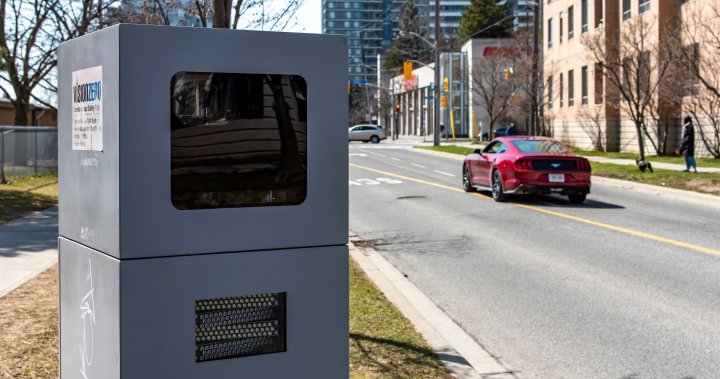The City of Toronto is significantly expanding its automated speed enforcement (ASE) program, doubling the number of speed cameras deployed across its streets from 75 to 150 in 2025. This initiative aims to enhance road safety by deterring speeding, particularly in areas with high collision rates and vulnerable road users. The expansion comes amidst ongoing challenges with vandalism targeting existing ASE devices, with incidents ranging from spray-painting to complete destruction. Despite these setbacks, the city maintains its commitment to the program, citing its effectiveness in reducing speed-related collisions. The new installations will begin in the first quarter of 2025 and involve a strategic shift towards data-driven placement, prioritizing locations with the most concerning speed and collision statistics.
The current 75 ASE cameras are distributed equally among Toronto’s 25 wards, rotating locations within designated community safety zones every three to six months. This rotation aims to maximize their impact across various neighbourhoods and address specific speeding concerns. However, the ongoing vandalism, with 12 cameras damaged beyond repair in 2024, necessitates a more robust approach. The city, while condemning these acts, acknowledges the negative impact on road safety and the resources required for replacement and repairs. The responsibility for these costs, however, lies with the vendor providing the ASE service, shielding taxpayers from additional expenses related to vandalism. The vendor is also tasked with reporting serious vandalism incidents to the Toronto Police Service, who investigate and pursue charges as appropriate.
The move towards a data-driven deployment strategy for the new ASE cameras marks a significant change in the program’s implementation. Instead of an even distribution across wards, the 75 new cameras will be strategically placed in locations identified as having the most problematic vehicle speeds and collision histories. This approach aims to maximize the program’s effectiveness in reducing speed-related incidents and enhancing overall road safety. Furthermore, up to 25 of the new cameras will be installed as permanent pole-mounted systems. This shift towards permanent installations is a direct response to the persistent vandalism, aiming to deter future incidents and reduce the resources required for frequent relocation and repairs.
The persistent vandalism of ASE cameras underscores a complex interplay of factors related to public perception, enforcement, and road safety. While the city emphasizes the program’s effectiveness in reducing speeds and collisions, acts of vandalism suggest a degree of resistance or resentment towards automated enforcement. This underscores the importance of public education and engagement to address concerns and foster understanding of the program’s purpose and benefits. Furthermore, the collaboration between the city, the ASE vendor, and Toronto police highlights the multi-faceted approach required to address vandalism and ensure the program’s long-term viability.
The ASE program in Toronto forms part of a broader strategy to improve road safety and reduce traffic-related injuries and fatalities. The city’s commitment to expanding the program, despite the challenges posed by vandalism, reflects its prioritization of road safety. The shift towards data-driven placement and the introduction of permanent installations demonstrate a proactive approach to optimizing the program’s effectiveness and mitigating the impact of vandalism. The success of this expanded program will depend not only on its technical implementation but also on ongoing public education and engagement to foster support and compliance.
Ultimately, the Toronto ASE program’s expansion signifies a continuous evolution in utilizing technology to enhance road safety. By leveraging data-driven insights and adapting to challenges like vandalism, the city aims to create safer streets for all road users. The ongoing collaboration between the city, the ASE vendor, and law enforcement agencies underscores a collective commitment to tackling speeding and reducing collisions. The program’s success will ultimately be measured by its impact on reducing speed-related incidents and fostering a culture of safe driving in Toronto. The coming years will reveal the effectiveness of this expanded and strategically implemented ASE program.

